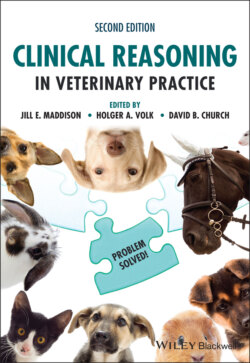Читать книгу Clinical Reasoning in Veterinary Practice - Группа авторов - Страница 85
Introduction and classification
ОглавлениеDiarrhoea is a common clinical sign in animals presented to veterinarians in small animal practice. Similar to vomiting, the clinical consequences can range from insignificant to life threatening, although the latter is less common than the former. Many acute cases require little diagnostic intervention and resolve with or without symptomatic treatment. Chronic diarrhoea, however, can be a diagnostic challenge and the source of much frustration for the client and veterinarian. It is defined as diarrhoea that lasts for more than three weeks or intermittent diarrhoea over a period of one month or more. Animals can have chronic diarrhoea for months to years. Often, the animal may not be particularly unwell, and the diarrhoea may be chronic but intermittent and may respond partially but not entirely to different therapeutic interventions.
Diagnostic investigation of chronic diarrhoea can involve various procedures that range from the inexpensive to the expensive and the non‐invasive to the invasive. Unlike many clinical problems, therapeutic trials often play an important role in helping the clinician reach a probable diagnosis. However, trials need to be conducted logically and the outcomes reviewed critically.
The temptation to give multiple treatments aimed at different aetiologies in the hope that something will work is understandable. However, even if there is a positive response to multi‐modal therapy, if the diarrhoea recurs once treatment stops (as it often does), the clinician is no wiser about the underlying cause and how to manage the patient long term. Patience is needed by all parties, and excellent communication between the veterinarian and the client is imperative. The clinician needs to have a rational diagnostic and therapeutic approach to chronic diarrhoea in the dog and cat, and this will be dependent on the classification of the type of diarrhoea that is present and its potential causes.
